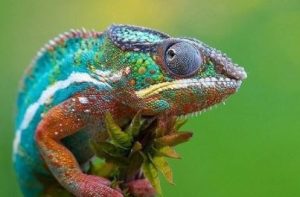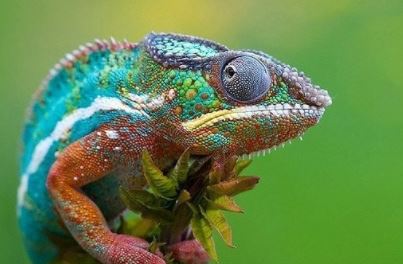How often do chameleons eat
How often do chameleons eat: Chameleons, with their mesmerizing ability to change colors and their unique physical adaptations, are truly captivating reptiles. Found in various regions across the world, these fascinating creatures are characterized by their elongated bodies, prehensile tails, independently moving eyes, and specialized feet that allow them to effortlessly grip branches. Chameleons have long been subjects of wonder and intrigue for both scientists and enthusiasts alike.
Understanding the eating habits of chameleons is crucial for ensuring their proper care and maintenance. As primarily insectivorous creatures, chameleons rely on a diet consisting mostly of small invertebrates like crickets, flies, moths, and beetles.
However, the frequency at which chameleons consume food can vary significantly depending on several factors such as species, age, size, metabolic rate, activity level and even environmental conditions including temperature and humidity. By delving into the intricacies of chameleon feeding patterns and behavior we can gain valuable insights into how to best provide for them in captivity.
This knowledge not only contributes to their overall well-being but also assists in preventing potential health issues that may arise from improper nutrition or feeding practices. In essence, comprehending how often chameleons eat grants us a deeper understanding of these remarkable reptiles while allowing us to effectively cater to their dietary needs.
Brief overview of chameleons as fascinating reptiles
Chameleons belong to the family Chamaeleonidae within the order Squamata. With over 200 recognized species worldwide ranging from tiny pygmy leaf chameleons under an inch long to large veiled chameleons reaching up to 2 feet in length (including tail), they display an impressive diversity both in terms of appearance and behavior. These remarkable reptiles are mainly arboreal creatures found inhabiting forests, scrublands, and deserts across Africa, Madagascar, Europe, Asia, and even parts of the Americas.
One of the most distinctive features of chameleons is their ability to change color. Contrary to popular belief, chameleons do not change color to match their surroundings but rather use this incredible adaptation as a means of communication and thermoregulation.
The intricate pigmentation changes are controlled by specialized cells called chromatophores in their skin. Chameleons can display a wide range of vibrant colors including various shades of green, brown, blue, red, yellow and even black depending on their mood or environmental conditions.
Importance of understanding their eating habits for proper care and maintenance
 Properly caring for a chameleon involves more than just providing it with a suitable enclosure and correct temperature gradients. A crucial aspect that often goes overlooked is ensuring that these reptiles receive an appropriate diet tailored to meet their specific nutritional requirements.
Properly caring for a chameleon involves more than just providing it with a suitable enclosure and correct temperature gradients. A crucial aspect that often goes overlooked is ensuring that these reptiles receive an appropriate diet tailored to meet their specific nutritional requirements.
Chameleons have evolved to capture prey using their long tongues which they rapidly extend outwards with remarkable accuracy. Their insectivorous nature necessitates a diet rich in protein for growth, energy production, and overall health.
Understanding the frequency at which chameleons eat allows us to mimic their natural feeding patterns in captivity more effectively. By replicating the conditions that they would encounter in the wild—where food availability may be intermittent—we can help ensure optimal digestion and prevent issues such as overfeeding or underfeeding.
Furthermore, comprehending how often they eat enables us to establish regular feeding schedules that promote healthy growth rates while simultaneously avoiding potential complications related to obesity or malnutrition. Delving into the fascinating world of chameleon feeding habits provides not only an opportunity for awe-inspired exploration but also serves as an indispensable tool for successfully maintaining these captivating creatures in captivity.
By gaining insight into how often chameleons eat along with their nutritional requirements, we can create an environment that mirrors their natural habitat and allows them to thrive. So, let us embark on this journey of discovery and unravel the mysteries surrounding these enigmatic reptiles.
General Feeding Patterns of Chameleons
Frequency of Feeding Varies Among Different Species
When it comes to the feeding habits of chameleons, there is no one-size-fits-all approach. Different species exhibit varying feeding patterns and frequencies. Some chameleon species are known to be voracious eaters, while others have a more conservative appetite.
For example, the Veiled Chameleon (Chamaeleo calyptratus) tends to feed more frequently than the Panther Chameleon (Furcifer pardalis). Understanding these variations is crucial for providing adequate care and maintaining the overall health of these captivating reptiles.
Factors Influencing Feeding Frequency
Several factors influence how often a chameleon needs to eat. One significant factor is the age and size of the chameleon itself. Juvenile chameleons generally have higher metabolic rates due to their rapid growth, requiring more frequent feeding compared to their adult counterparts.
Similarly, smaller chameleons have faster metabolism and higher energy needs, necessitating more regular meals. Another determining aspect is the metabolic rate and activity level of the chameleon.
Active species with high metabolic rates tend to require more frequent feeding sessions compared to less active ones. Chameleons that live in warmer environments may also exhibit increased metabolic rates due to higher body temperatures.
Conversely, cooler temperatures may slow down metabolism, leading to decreased feeding frequency. Environmental conditions such as temperature and humidity levels also play a role in a chameleon’s feeding frequency.
Optimal temperatures within their enclosure are vital for maintaining proper digestion and metabolism. Insufficient warmth can result in decreased appetite or sluggish digestion, while excessive heat may lead to dehydration or stress-induced anorexia.
Understanding these factors will help you establish an appropriate feeding schedule tailored specifically for your chameleon’s requirements. Monitoring their behavior closely will allow you to make adjustments and ensure they receive adequate nutrition for their overall well-being.
Diurnal vs Nocturnal Chameleons: Differences in Feeding Habits
Diurnal Chameleons
How often do chameleons eat:Diurnal chameleons, as the name suggests, are active during the day. This daytime activity requires them to have a higher energy expenditure compared to their nocturnal counterparts.
Consequently, diurnal chameleons require more frequent meals to sustain their metabolic needs and overall health. In terms of diet, diurnal chameleons typically feed on small insects such as crickets or flies.
These agile reptiles possess a remarkable ability to accurately strike and capture their prey with their long tongues. Due to the smaller size of these insects, diurnal chameleons exhibit a feeding strategy that involves multiple meals throughout the day, albeit with smaller portions each time.
This behavior allows them to continuously replenish their energy levels by obtaining several quick bursts of nutrition. The frequency at which diurnal chameleons feed varies among different species and individuals but is generally higher than that of nocturnal chameleons.
The specific requirements also depend on factors such as age, size, and environmental conditions. By consuming regular small meals throughout the day, diurnal chameleons ensure they maintain adequate energy levels for both survival and physiological functions.

Nocturnal Chameleons
Nocturnal chameleons have adapted to be active during the night when ambient light levels are lower. As a result, they exhibit distinct differences in their feeding habits compared to their diurnal counterparts.
Due to slower metabolism during nighttime activity periods, nocturnal chameleons do not require as frequent or numerous meals as diurnals do. They have evolved to compensate for this lower metabolic rate by acquiring larger prey items that provide more substantial nutrients in fewer feedings.
Prey preference also differs for nocturnals; they tend to favor larger insects like moths or beetles. These prey items not only satisfy their hunger but also provide a higher caloric intake, enabling them to meet their energy requirements in fewer feedings.
Unlike diurnal chameleons that feed multiple times a day, nocturnal chameleons generally feed every other day. This feeding schedule aligns with their slower metabolic rate and gives them ample time to digest the larger meals they consume during the night.
The ability to obtain sufficient nutrition while feeding less frequently allows nocturnal chameleons to thrive in their specific ecological niche. Understanding the differences in feeding habits between diurnal and nocturnal chameleons is crucial for providing optimal care for these fascinating reptiles.
Diurnals require more frequent meals throughout the day, primarily consuming small insects, while nocturnals feed less often but prefer larger prey items. By catering to their distinct dietary needs, we can ensure that both diurnal and nocturnal chameleons maintain good health and thrive in captivity.
Species-Specific Feeding Habits: Examples from Popular Chameleon Species
Veiled Chameleon (Chamaeleo calyptratus)
 The Veiled Chameleon, scientifically known as Chamaeleo calyptratus, is a remarkable diurnal species that possesses a high metabolic rate. As an inhabitant of the arid regions of Yemen and Saudi Arabia, this chameleon has adapted to a diet primarily consisting of various insects to sustain its energy levels. Known for its ability to change color and blend seamlessly with its environment, the Veiled Chameleon’s hunting techniques are equally impressive.
The Veiled Chameleon, scientifically known as Chamaeleo calyptratus, is a remarkable diurnal species that possesses a high metabolic rate. As an inhabitant of the arid regions of Yemen and Saudi Arabia, this chameleon has adapted to a diet primarily consisting of various insects to sustain its energy levels. Known for its ability to change color and blend seamlessly with its environment, the Veiled Chameleon’s hunting techniques are equally impressive.
In the wild, these chameleons display their predatory skills by capturing insects such as crickets, locusts, grasshoppers, flies, and even small spiders. Their quick movements and exceptional accuracy enable them to snatch their prey using their long and sticky tongues.
To ensure they acquire sufficient nutrients throughout the day, Veiled Chameleons typically feed on multiple occasions. Their feeding habits include consuming several small insect meals daily instead of relying on larger quantities in one sitting.
Panther Chameleon (Furcifer pardalis)
How often do chameleons eat: The Panther Chameleon, scientifically named Furcifer pardalis, is another captivating example of diurnal chameleons with distinct dietary requirements. Originating from Madagascar’s coastal regions and rainforests, these chameleons exhibit a vibrant array of colors and patterns that change according to their mood or surroundings.
To maintain optimal health and vibrant coloration, Panther Chameleons require regular feeding throughout the day. Their diet mainly consists of different types of insects such as crickets, roaches, mealworms, waxworms, and fruit flies.
These skilled hunters possess excellent visual acuity which aids them in tracking down their prey accurately. Panther chameleons have a slower metabolic rate compared to some other chameleon species, requiring them to feed frequently with smaller portions.
Their feeding routine typically involves several feeding sessions each day, allowing them to consume an adequate amount of food while conserving energy for other physiological processes. Overall, understanding the species-specific feeding habits of popular chameleon species like the Veiled Chameleon and Panther Chameleon is crucial for their well-being in captivity.
By replicating their natural feeding patterns and providing a diverse diet consisting of appropriate insects, chameleon owners can ensure their pets receive necessary nutrition while also satisfying their innate hunting instincts. This way, these captivating reptiles can thrive and enchant us with their mesmerizing colors and unique adaptations.
Special Cases: Unique Dietary Requirements in Some Chameleon Species
Dietary Specializations in Pygmy Chameleons (Brookesia spp.)
 Pygmy chameleons, belonging to the genus Brookesia, exhibit exceptional dietary adaptations. These tiny creatures, found predominantly in Madagascar, have unique feeding habits that set them apart from their larger chameleon relatives. Unlike most chameleons that primarily feed on insects, pygmy chameleons have evolved to incorporate a significant portion of their diet from plant matter.
Pygmy chameleons, belonging to the genus Brookesia, exhibit exceptional dietary adaptations. These tiny creatures, found predominantly in Madagascar, have unique feeding habits that set them apart from their larger chameleon relatives. Unlike most chameleons that primarily feed on insects, pygmy chameleons have evolved to incorporate a significant portion of their diet from plant matter.
They utilize their specialized tongue to pluck small plant parts and consume algae as a vital component of their nutrition. While they still require occasional insect intake for protein sources, the reliance on plant material showcases their fascinating adaptation to their specific habitats.
Leaf-Tailed Chameleon (Uroplatus spp.) Feeding Behavior
The leaf-tailed chameleons, belonging to the Uroplatus genus and native to Madagascar and surrounding islands, are renowned for their excellent camouflage abilities. Their unique feeding behavior complements this remarkable camouflage strategy. Leaf-tailed chameleons rely heavily on ambush predation techniques.
These nocturnal species patiently wait for insects to approach closely before launching a swift strike with their extraordinary tongue projection mechanism. This specialized hunting strategy allows them to utilize minimal energy expenditure while ensuring successful prey acquisition.
The Lesser-Known Herbivorous Chameleon: Rhampholeon spp.
While most commonly known as insectivores, some species within the Rhampholeon genus have adopted herbivory as a primary dietary strategy. Found in forested regions of East Africa, these diminutive chameleons occupy niche habitats rich in vegetation and foliage conducive for herbivorous feeding behaviors.
They exhibit an intriguing adaptation where they selectively consume specific plants depending on their nutritional requirements. This specialization in herbivory showcases the remarkable diversity within the chameleon family and emphasizes the importance of understanding the specific dietary needs of different species.
To sum up how often do chameleons eat
Understanding the feeding patterns and dietary requirements of chameleons is crucial for their proper care and well-being. While most chameleon species are primarily insectivores, there are fascinating exceptions that demonstrate unique adaptations and specialized feeding habits. From pygmy chameleons incorporating plant material into their diet to leaf-tailed chameleons employing stealthy ambushing techniques, each species showcases its distinct characteristics.
By delving into the intricacies of these dietary specializations, we can appreciate the incredible diversity within this captivating reptile family. It is this complexity that continues to astound researchers and enthusiasts alike.
As we unravel more about these extraordinary creatures, we gain a deeper comprehension of their ecological roles and develop more effective strategies for their conservation. Embracing the marvels of nature’s intricate designs allows us to cherish every aspect of our world.
Further Reading:
- Best Turtle Substrate For Your Pet Tank
- Coconut substrate for chameleons
- Caught my Chameleon eating moss


